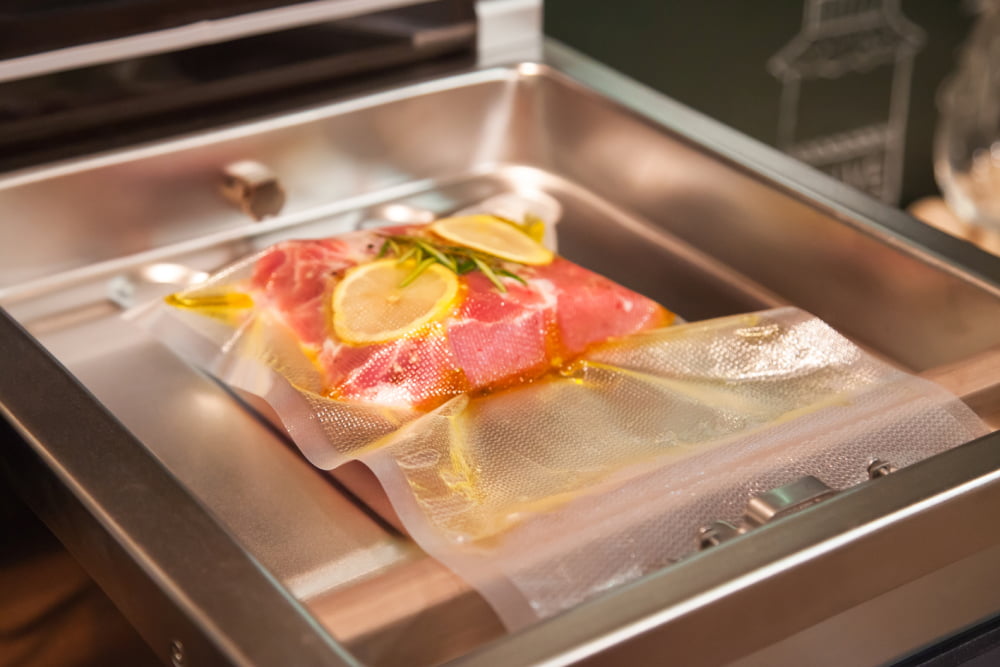7 easy tips to vacuum seal food safely

Vacuum sealing is a popular method of food preservation that involves removing air from a bag or container before sealing it to extend the shelf life of food. Apart from preserving food, vacuum sealing also helps to keep it fresh, reduce waste, and save money. However, for optimal results, it’s important to follow some tips and best practices to ensure that the vacuum-sealed food remains fresh, flavorful, and safe to consume.
Pick the right bag
It is important to choose the right bag when using a food vacuum sealer. It is recommended to look for a food-grade vacuum sealer bag and consider its quality, size, thickness, and other aspects. It is best to choose high-quality textured bags that are effective in expelling air. A good quality bag provides sturdy protection against moisture and microbial activity. Look in the market for different sizes of vacuum bags that can cater to a variety of storage needs. Thicker bags are considered ideal for vacuum-sealing liquids, and sous vide. On the other hand, dry foods are sealed better in thinner bags.
Seal, don’t squish
When using a good vacuum sealer, taking care of the food being packed is important. Allowing the food some space for movement is one of the basic tips for good food sealing. Leaving some considerable space between the edge of the bag and the food in it comes in handy to avoid leakage and spillage. Additionally, it will also allow users a proper food sealing experience. This space is a prudent choice as it provides users with enough space to create a proper seal that keeps the food fresh.
Prepare the food properly
Another thing to keep in mind when preparing food for vacuum sealing is ensuring it has been prepared properly. Foods like fish, meat, or even fruit should be pat dry before placing their sealed bags in the freezer. This is so that the excessive moisture on these foods does not create spills or prevent a proper seal. At the same time, if trying to vacuum seal soups or other liquids, it is recommended to pre-freeze them. This step prevents liquids from getting sucked into the vacuum chamber.
Label the bags
Labeling allows proper storage and organization of the freezer or the pantry. It makes a tedious task effortless. Users should put labels on each bag that list all the ingredients of the dishes. Aside from that, adding the date the food was prepared or sealed provides further organization. This simple step can help streamline the process of cooking or reheating food. It also enables users to minimize food wastage ensuring that the stored items are easily identifiable by users. In addition, the date on the labels provides insight to the user about the usage of these foods.
Consider double sealing
For maximum protection and extended storage, double-seal the vacuum-packed items. Simply leave a small gap between the first and second seals. This creates a reinforced closure, effectively adding an extra layer of security against air leaks and spoilage. Think of it as building a double wall around precious provisions, ensuring they stay fresh and flavorful for longer. Whether storing succulent steaks for that epic barbecue or preserving delicate herbs for winter recipes, double sealing is a secret weapon for ultimate vacuum-packed perfection.
Clean the vacuum sealing machine regularly
It is recommended that the machine should be taken care of, aside from being put to use. Avoiding the machine’s maintenance is one of the most commonly overlooked things when using a food vacuum sealer. Before the machine goes bad or loses its effectiveness, it is advised that people take care of the sealing gaskets. The constantly accumulating debris might cause these rubber gaskets to wear out and lose their function. Routine cleaning and inspection of the gasket contribute to the efficacy and longevity of the sealer.
Consider other options
Bags might not always be the only prudent choice when it comes to vacuum-sealing foods. Sometimes, one might need to think of ways other than the bag to get the job done. In such instances, look for canister attachments that come with some vacuum food-sealing machines. It can come in handy when trying to seal foods like leafy greens, nuts, berries, and more. Use the attachment to vacuum seal these foods in glass jars or containers. In addition to protecting these foods from microbes present in the air, it also keeps them from being crushed.

